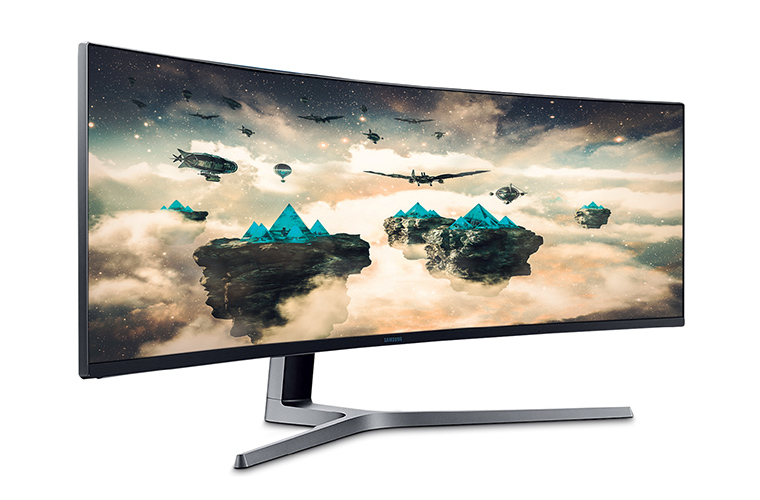Review: Samsung CHG90 Monitor

Are you a gaming broadcaster? Or just an esports star in training? Samsung’s super-wide screen CHG90 QLED may inspire you. Most of the world’s monitors are either 16:9, the same shape as a high-definition TV, or around 21:9, the shape of the classic Cinemascope screen. Samsung’s 49in C49HG90 monitor is more ambitious. It’s three and a half times wider than it is high, with a native resolution of 3840 by 1080. The CHG90 is a gamer’s display, prioritising speed. As well as 144Hz frame rates, there’s backlight strobing. This switches off the LEDs behind the LCD panel when it’s changing state from frame to frame, so the tiny moment of blur is invisible and there’s no motion smearing. The effect can be made visible by waving a hand in front of a bright area, but at such high frame rates there’s no sense of flicker in the image itself. There’s a selection of modes intended for various types of game, though serious gamers often have very specific ideas about how a monitor should be set up and can assign three configurations to hotkeys. Wide, wide world Whether the view-filling shape translates to a competitive advantage will depend on the game, but that 32:9 aspect ratio certainly covers more peripheral vision than even a 21:9 image. It’s not a VR headset, but it’s more involving than a conventional display. The effect works best at a distance – sit too close and the extreme edges start to require a head-turn to take advantage of the extra acreage. The monitor is spectacular in flight simulators and some people might take interest in it as a desktop display, perhaps with the idea of stretching an edit timeline out across the full width. That works, but the monitor is best suited for games. The CHG90 is basically the size of two 16:9, 27in monitors side by side and a display of that spec would invariably be 1440 pixels high. For productivity applications, the CHG90’s 1080-pixel height can feel a little confining. It’s an understandable decision, though. Make a 32:9 monitor 1440 pixels high and it’d be 5K wide, requiring a big system to achieve frame rates high enough to take advantage of the 144Hz modes. The monitor does support FreeSync, so it will make the best use of all the frames your machine can throw at it. If there’s any other problem, it’s that the sheer width means if the start menu is over here, then the system tray is very much over there, and it’s easy to fall into the trap of working only in part of the space. Fast reacting Colour is good for something that isn’t a reference monitor. In standard sRGB mode, errors are generally under five delta E (under two is ideal), with one error of 6.8 in the yellows. It drifts slightly blue in the highlights, and greens and reds are more saturated than blues, but it’s within a correctable range. Viewing angles tend to suffer on fast displays like this, but the CHG90’s performance is actually pretty good, showing an increase in black level but very little colour shift. Samsung promotes HDR support. Rolling the mouse cursor over a black image, viewed deliberately off-axis, reveals that there are probably eight large rectangular zones on the backlight, with output approaching 600 nits peak with 250-300 on average. Between these two factors, the CHG90 won’t provide a premium HDR experience, though it might encourage more games to implement HDR. The CHG90 is designed to be a fast-reacting display that fills the user’s peripheral vision, while not overly stressing your graphics card. Those are specific design choices for gamers and the CHG90 achieves them ably. The display sells for £1000 in the UK, which is a fair deal for such a rare bloom, and there’s certainly nothing else like it.]]>









